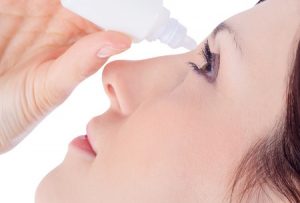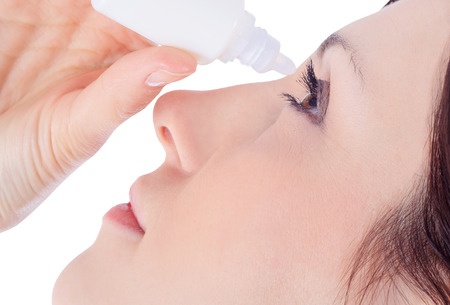All About Dry Eye | What is Dry Eye
 Dry eye can cause watery, red and sensitive eyes. Also known as keratoconjunctivitis sicca, it is very common and affects over 300 million people worldwide. It is one of the most common reasons to visit the eye doctor.
Dry eye can cause watery, red and sensitive eyes. Also known as keratoconjunctivitis sicca, it is very common and affects over 300 million people worldwide. It is one of the most common reasons to visit the eye doctor.
Causes of dry eye vary and affect both young and old. There are many treatments available, including the FDA approved LipiScan and LipiFlow.
Symptoms of Dry Eye
Normally, tears are spread across the cornea with every blink. Tears have many functions and are necessary for keeping the cornea smooth, moist and clear. Your cornea is very sensitive and is also responsible for about 2/3 of the focusing power of the eye. This explains why vision can sometimes be blurry AND cause pain, sensitivity and redness, too.
- Burning
- Redness
- Itchy
- Tearing
- Sore
- Dryness
- Blurry vision
- Sensitivity to light
- Heaviness
- Tired/Achy eyes
Normal Tears
Normal tears create a film over the surface of the eye. There are actually 3 layers to the normal tear film;
- Mucous Layer – the inner layer, allows the watery tears to spread evenly across the cornea
- Water (aqueous) Layer – the middle layer, lubricates the eye
- Oil (lipid) Layer – the outermost layer which prevents evaporation.
Cells of the conjunctiva (the thin transparent outer tissue of the eye) produce the mucous layer. These “goblet cells” produce a substance which allows the watery tears to spread across the corneal surface, keeping it moist and germ free.
The watery portion of tears is produced by the lacrimal gland.
The oily later is produced by dozens of tiny meibomian glands found in your upper and lower eyelids.
Causes of Dry Eye
While there are many, many causes of dry eye, there are two common pathways leading to symptomatic dry eye. Dry eye occurs when there is;
- insufficient tear production
- rapid tear evaporation
Diagnosis of Dry Eye
There are multiple tests geared to determine if your dry eye is a result of either insufficient tear production or over evaporation.
The most technologically advanced diagnostic tool is called LipiScan. This is a device used to measure inflammation of the meibomian glands. Meibomian gland dysfunction (MGD) is one of the most common and newly recognized cause of dry eye.
The meibomian glands produces an oily substance which forms the outermost layer of the tear film. Just as oil droplets float to the surface of a puddle, this oily secretion coats the tear film and prevents tear evaporation.
LipiScan is an FDA approved diagnostic tool which allows direct visualization of the meibomian glands. Meibomian gland dysfunction (MGD) is a very, very common treatable cause of dry eye.
Do you have red, watery and sensitive eyes? Please call us (202.686.6700) or email us!
We look forward to meeting you.
The Doctors of Eye Associates of Washington, D.C.
Serving Washington, D.C. and Tysons Corner
Board Certified Eye Physicians and Surgeons






